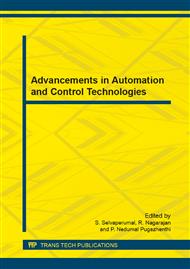p.102
p.108
p.115
p.122
p.130
p.136
p.143
p.150
p.155
Time Domain Based Digital Controller for Sepic Converter
Abstract:
This paper presents a discrete PWM controller for SEPIC (Single ended Primary Inductor Converter) converter. SEPIC is chosen since it has positive voltage gain and higher characteristics than any other converter. To improve the transient response and dynamic stability of the proposed converter, Discrete PID controller is the most preferable one. The proposed controller improves the dynamic performance of the SEPIC converter by achieving a robust output voltage against load disturbances, input voltage variations and changes in circuit components. The converter is designed through simulation using MATLAB / Simulink and performance parameters are also measured. The discrete controller is implemented, design goal is achieved and the same is verified against theoretical calculation using LabVIEW. Keywords: SEPIC converter, Discrete PID Controller, Analog to Digital Converter (ADC), Digital Pulse Width Modulator (DPWM).
Info:
Periodical:
Pages:
130-135
Citation:
Online since:
June 2014
Price:
Сopyright:
© 2014 Trans Tech Publications Ltd. All Rights Reserved
Share:
Citation:


